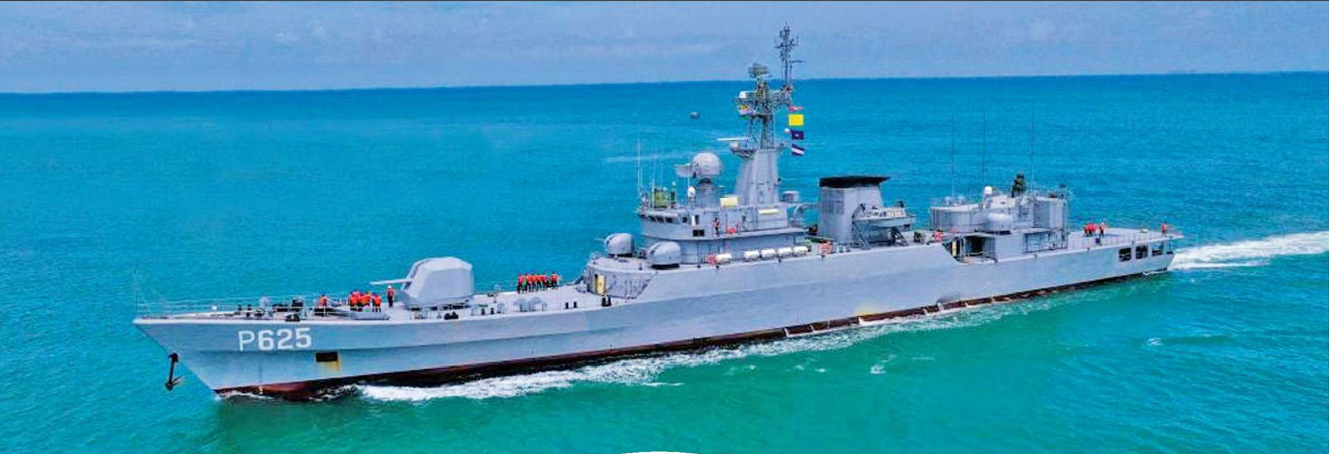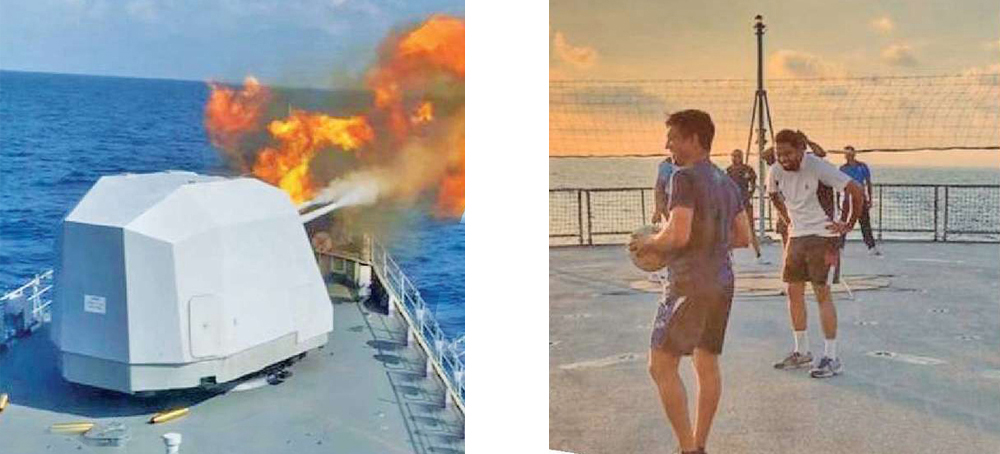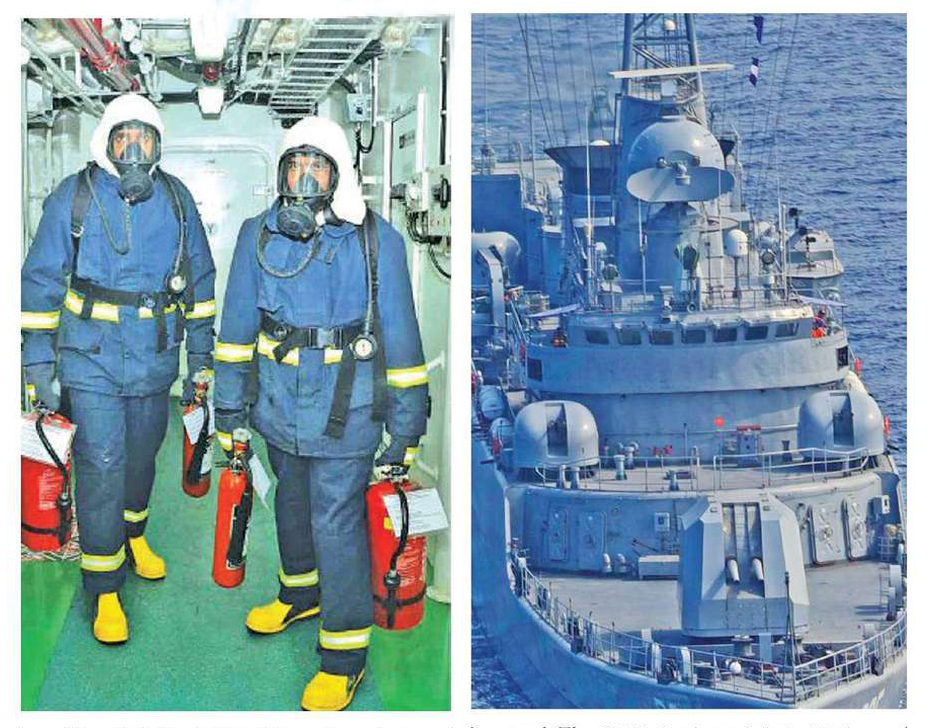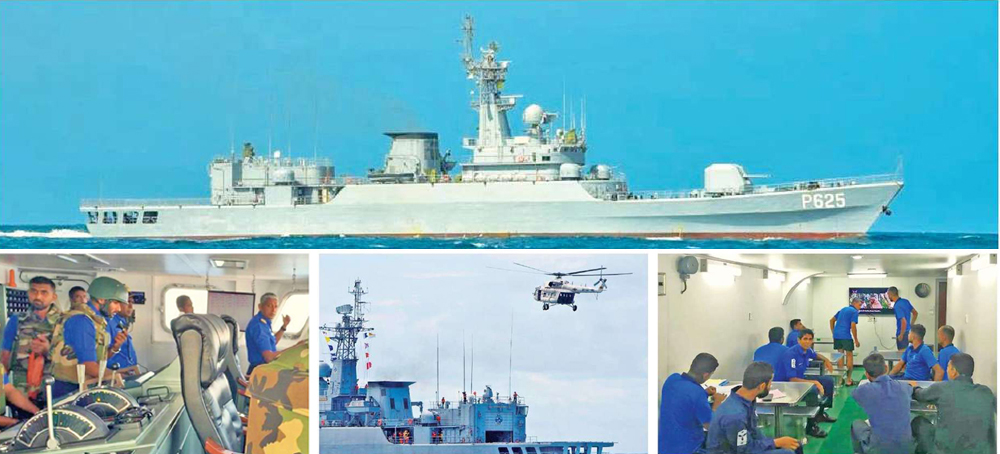SLNS Parakramabahu : Pride of the naval fleet
May 24, 2021SLNS Parakramabahu : Pride of the naval fleet
By Dishan Joseph

The location of Sri Lanka gives this nation strategic importance on maritime maps. Over the past decade, the Sri Lanka Navy has steadily enhanced its fleet with 'blue water' capability. I was honoured to go onboard the magnificent frigate class Advanced Offshore Patrol Vessel SLNS Parakramabahu (P-625).
Cruising at a speed of 25 knots, skimming through the waves this vessel is the pride of the Naval fleet. The view from her formidable defensive bridge and deck is stunning. The vessel's crest displays an Orca whale – a symbol of strength, intelligence, power and longevity along with an anchor denoting Naval security and stability. This vessel was donated to Sri Lanka by the People's Republic of China. This is the second vessel to be named Parakramabahu as previously the Sri Lanka Navy had a type 73 Corvette (P-351) under the same name in the 1990s.

In order for the Sri Lankan crew to get used to operating this frigate they travelled to China two months in advance. The officers and sailors were given an extensive training onboard and were ready to sail back to Colombo. The Sri Lanka Navy crew left Shanghai Harbour on June 25, 2019 and reached Colombo Port on July 8, where the new vessel was welcomed in accordance with Naval traditions. This long voyage was a great experience for the crew as they covered 4,013 nautical miles. The frigate can carry a crew of 160 including 21 officers. She was ceremonially commissioned in August 2019, amidst a distinguished gathering. Her pre-sent Commanding Officer is Captain A.K.R. Athukorala.
SLNS Parakramabahu has an imposing and intimidating structure. The frigate is 112 metres long and has a beam of 12 metres. She has a sailing displacement of 2,300 tons. When this vessel is deployed on the deep sea, she has an endurance of 15 days (which equals to almost 3,500 nautical miles). This frigate enhances our Navy's blue water capability. According to the US Naval Operations concept, 'blue water' is defined as the open ocean and 'green water' as coastal waters and harbours.
The ship's Navigation Officer showed me the complex network of computers which guide this massive vessel. In order to enhance her combat capability SLNS Parakramabahu is fitted with a surveillance radar, which can pick up other vessels and objects at a range of 150 kilometres. This is important for the crew who are tasked with identifying and intercepting suspicious vessels, especially at night. The deep sea patrols also act as a deterrent to trawlers involved in illegal narcotics and human smuggling.
We climbed down a flight of steps through a series of hatches and came to the front deck where the main 100mm gun is positioned. This automated firing control system is the most advanced in the Sri Lankan Naval armament. The main gun with its twin barrels can traverse and elevate according to the information processed from the Firing Control Room (FCR).
This secure area is commanded by the Gunnery Officer. I was able to witness the most advanced Naval computers onboard. The systems are further enhanced by the long range surface and air surveillance radar which can accurately guide the shells to the desired targets. Unlike the other vessels in the fleet, onboard P-625 there is no need for gunners to be exposed on the outside gun turret. The weapons are fired from within the frigate. With her four stabilizers this formidable frigate offers a stable platform in any sea condition. The firepower is further enhanced with four 37mm twin barrel guns augmented with optical aiming devices for accurate weapons delivery.
We proceeded next to the main engine of SLNS Parakramabahu, along with an electrical Engineering Officer. This frigate has four floors above its water line and another floor below the water line. The vessels propulsion is generated by two 390 VA engines and two fixed pitch propellers. Engineering crews work around the clock to keep the engines in sea-worthy condition.
On every deep sea patrol a Navy doctor sails with the crew. The modern Sick Bay on board P-625 has the latest medical technology to respond to any medical emergency. During their numerous sea patrols in the past, the sailors were able to rescue many local fishermen lost at sea owing to rough weather and the fishermen were given medical treatment onboard. The sailors and officers were engaged in their daily ship's routine, practising their fire drills, man overboard drills and replenishment at sea exercise. Fire fighting drills are important on such a large vessel. The SLNS Parakramabahu is fitted with a helicopter landing pad.
Each branch represented onboard has a task to do at sea. We walked into the galley - the Naval term for kitchen. Some young cooks were preparing a meal of rice and curry. The SLNS Parakramabahu has a modem kitchen. The catering crew bake their own bread whilst at sea, which is nice for all on board as they are hundreds of miles away from shore, but still enjoy a meal which is identified with shore bases.
Drinking water is obtained by a reverse osmosis plant which can transform sea water into clean drinking water. This remarkable frigate can easily generate 15 tons of clean water daily. Meeting this requirement at sea increases the sea endurance of P-625. Young sailors displayed their teamwork, going about their routine. I met some senior sailors holding the rank of Master Chief and Chief Petty Officer. These senior sailors are the role models for the younger sailors.
Teamwork and quick decision-making skills are hallmarks of naval life, because once you leave the harbour you have to meet every unexpected challenge at sea, including the ocean's changing weather patterns. In this backdrop, we can imagine the role and task of a Captain, who is responsible for all of his men on aboard.

As the sun set and painted the sky in many hues, the sailors narrated stories of sighting whales and dolphins from their long voyage from China to Colombo. The men engaged in some games on the helipad showing the camaraderie on board. As I stood on the helicopter deck and gazed at the main mast, the flags were fluttering in the cool breeze. The SLNS Parakramabahu has empowered the Sri Lanka Navy to systematically enhance its deep sea patrolling capacity and achieve the desired national security objectives. The American General Douglas Mc Arthur once said, "Duty, honour, country. Those three hallowed words dictate what you ought to be, what you can be, what you will be." The officers and sailors of P-625 reflect these words with their devotion to duty.

Courtesy - www.dailynews.lk